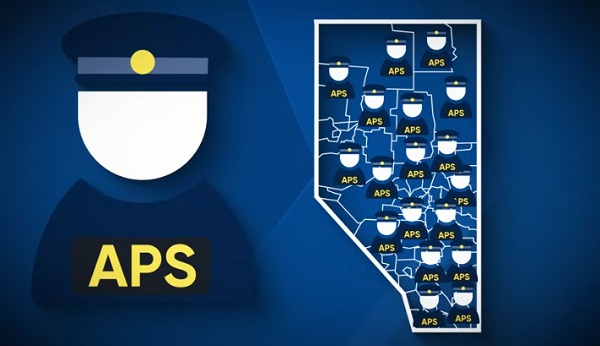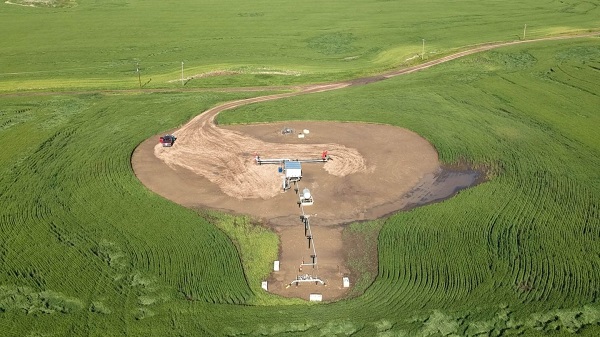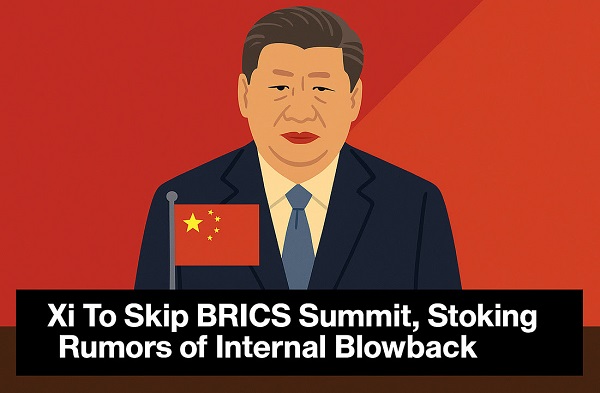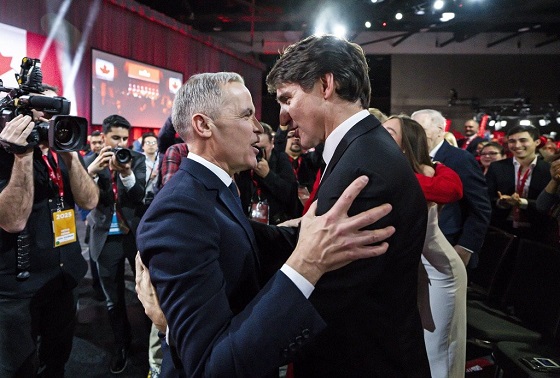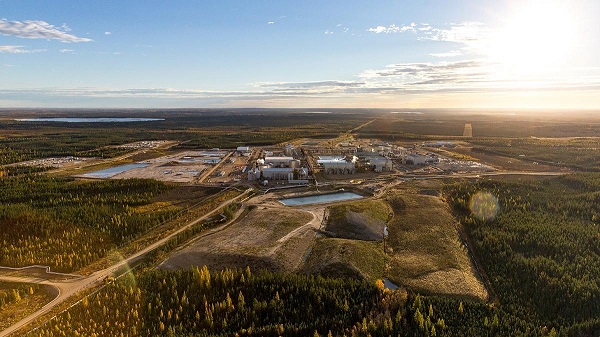Business
How the federal government weaponized the bank secrecy act to spy on Americans

A Congressional investigation committee released an extremely concerning report this week entitled: “FINANCIAL SURVEILLANCE IN THE UNITED STATES: HOW THE FEDERAL GOVERNMENT WEAPONIZED THE BANK SECRECY ACT TO SPY ON AMERICANS” that details how the US government has been monitoring American citizens through bank transactions, with an emphasis on citizens who have expressed conservative viewpoints.
“Financial data can tell a person’s story, including one’s “religion, ideology, opinions, and interests” as well as one’s “political leanings, locations, and more,”’ the report begins. This investigation began after a whistleblower who happens to be a retired FBI agent alerted Congress that the Bank of America (BoA) voluntarily provided the Biden Administration information on customers who used a credit or debit card in Washington, D.C., around the January 6 protests. The new report has revealed that federal agencies have been working “hand-in-glove with financial institutions, obtaining virtually unchecked access to private financial data and testing out new methods and new technology to continue the financial surveillance of American citizens.”
As I’ve said countless times, “money laundering” is ALWAYS the excuse for why the government must track and monitor our financial transactions. The Bank Secrecy Act (BSA) E-Filing System is a system for financial institutions to file reports required by the BSA electronically. By law, the BSA requires businesses to keep records and file reports to help prevent and detect money laundering. This is how the Biden Administration is attempting to disregard privacy and weaponize financial institutions.
US intelligence agencies searched through records for terms like “Trump” and “MAGA” to target Americans who they believed may hold “extremist” views. The agencies searched for Americans who purchased religious texts, such as the Bible, and also labeled them extremists. Anyone expressing disdain for the COVID lockdowns, vaccines, open borders, or the deep state were placed on a watchlist. Again, the BSA was used as a premise to pull transactions placed by the individuals on this list.
As explained by the investigative committee:
“With narrow exception, federal law does not permit law enforcement to inquire into financial institutions’ customer information without some form of legal process.9 The FBI circumvents this process by tipping off financial institutions to “suspicious” individuals and encouraging these institutions to file a SAR—which does not require any legal process—and thereby provide federal law enforcement with access to confidential and highly sensitive information.10 In doing so, the FBI gets around the requirements of the Bank Secrecy Act (BSA), which, per the Treasury Department, specifies that “it is . . . a bank’s responsibility” to “file a SAR whenever it identifies ‘a suspicious transaction relevant to a possible violation of law or regulation’”11 While at least one financial institution requested legal process from the FBI for information it was seeking,12 all too often the FBI appeared to receive no pushback. In sum, by providing financial institutions with lists of people that it views as generally “suspicious” on the front end, the FBI has turned this framework on its head and contravened the Fourth Amendment’s requirements of particularity and probable cause.”
Under this premise, anyone who held a viewpoint that opposed the Biden Administration was considered a “suspicious” individual who required monitoring. The Treasury Department’s Financial Crimes Enforcement Network created a database to carefully watch potential dissenters. Over 14,000 government employees accessed the FinCEN database last year and conducted over 3 million searches without a warrant. In fact, over 15% of FBI investigations during 2023 has some link to this database. It is estimated that 4.6 million SARs and 20.8 million Currency Transaction Reports (CTRs) were filed in the last year.
The committee noted that the government is incorporating AI to quickly search the web for “suspicious” Americans:
“As the Committee and Select Subcommittee have discussed in other reports, the growth and expansion of AI present major risks to Americans’ civil liberties.211 For example, the Committee and Select Subcommittee uncovered AI being used to censor “alleged misinformation regarding COVID-19 and the 2020 election . . . .”212 Those concerns are not hypothetical. Some AI systems developed by Big Tech companies have been programmed with biases; for example, Google’s Gemini AI program praised liberal views while refusing to do the same for conservative views, despite claiming to be “objective” and “neutral.” With financial institutions seemingly adopting AI solutions to monitor Americans’ transactions, a similarly biased AI program could result in the systematic flagging or censoring of transactions that the AI is trained to view as “suspicious.”
This is extremely troubling and goes beyond government overreach and violated numerous Constitutional protections. The government effectively transformed banking institutions into spy agencies, and anyone who could potentially hold a view that did not fit the Biden-Harris agenda has been treated as potential terrorist. It is completely insane that someone could be seen as an extremist for purchasing a religious text or purchasing a firearm. This is discriminatory, predatory behavior that puts millions of lives at risk. Think of governments in the past who have rounded up names of dissenters based on religion or ideology. They claim they are merely observing us, but the goal is to silence us.
The committee said their investigation has just begun as they will not allow the government’s abuse of financial data to go unchecked. Furthermore, they are concerned that these warrantless searches can lead to widespread debanking practices where the government can easily block any dissenter from participating in society by crippling them financially. This is yet another reason why governments want to push banks to create CBDC so that they can punish citizens with a simple click of a button.
Business
RFK Jr. says Hep B vaccine is linked to 1,135% higher autism rate

From LifeSiteNews
By Matt Lamb
They got rid of all the older children essentially and just had younger children who were too young to be diagnosed and they stratified that, stratified the data
The Centers for Disease Control and Prevention (CDC) found newborn babies who received the Hepatitis B vaccine had 1,135-percent higher autism rates than those who did not or received it later in life, Robert F. Kennedy Jr. told Tucker Carlson recently. However, the CDC practiced “trickery” in its studies on autism so as not to implicate vaccines, Kennedy said.
RFK Jr., who is the current Secretary of Health and Human Services, said the CDC buried the results by manipulating the data. Kennedy has pledged to find the causes of autism, with a particular focus on the role vaccines may play in the rise in rates in the past decades.
The Hepatitis B shot is required by nearly every state in the U.S. for children to attend school, day care, or both. The CDC recommends the jab for all babies at birth, regardless of whether their mother has Hep B, which is easily diagnosable and commonly spread through sexual activity, piercings, and tattoos.
“They kept the study secret and then they manipulated it through five different iterations to try to bury the link and we know how they did it – they got rid of all the older children essentially and just had younger children who were too young to be diagnosed and they stratified that, stratified the data,” Kennedy told Carlson for an episode of the commentator’s podcast. “And they did a lot of other tricks and all of those studies were the subject of those kind of that kind of trickery.”
But now, Kennedy said, the CDC will be conducting real and honest scientific research that follows the highest standards of evidence.
“We’re going to do real science,” Kennedy said. “We’re going to make the databases public for the first time.”
He said the CDC will be compiling records from variety of sources to allow researchers to do better studies on vaccines.
“We’re going to make this data available for independent scientists so everybody can look at it,” the HHS secretary said.
— Matt Lamb (@MattLamb22) July 1, 2025
Health and Human Services also said it has put out grant requests for scientists who want to study the issue further.
Kennedy reiterated that by September there will be some initial insights and further information will come within the next six months.
Carlson asked if the answers would “differ from status quo kind of thinking.”
“I think they will,” Kennedy said. He continued on to say that people “need to stop trusting the experts.”
“We were told at the beginning of COVID ‘don’t look at any data yourself, don’t do any investigation yourself, just trust the experts,”‘ he said.
In a democracy, Kennedy said, we have the “obligation” to “do our own research.”
“That’s the way it should be done,” Kennedy said.
He also reiterated that HHS will return to “gold standard science” and publish the results so everyone can review them.
Business
Elon Musk slams Trump’s ‘Big Beautiful Bill,’ calls for new political party
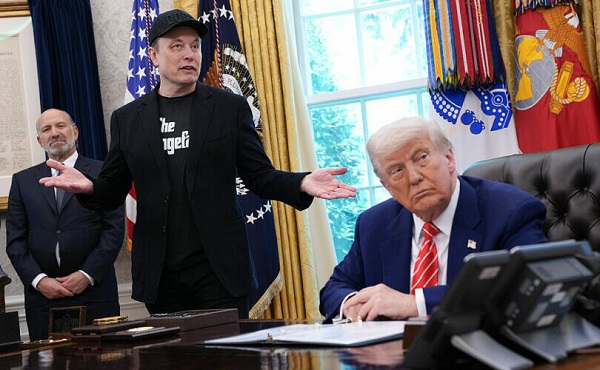
From LifeSiteNews
By Robert Jones
The Tesla CEO warned that Trump’s $5 trillion plan erases DOGE’s cost-cutting gains, while threatening to unseat lawmakers who vote for it.
Elon Musk has reignited his feud with President Donald Trump by denouncing his “Big Beautiful Bill” in a string of social media posts, warning that it would add $5 trillion to the national debt.
“I’m sorry, but I just can’t stand it anymore. This massive, outrageous, pork-filled Congressional spending bill is a disgusting abomination. Shame on those who voted for it: you know you did wrong. You know it,” Musk exclaimed in an X post last month.
I’m sorry, but I just can’t stand it anymore.
This massive, outrageous, pork-filled Congressional spending bill is a disgusting abomination.
Shame on those who voted for it: you know you did wrong. You know it.
— Elon Musk (@elonmusk) June 3, 2025
Musk renewed his criticism Monday after weeks of public silence, shaming lawmakers who support it while vowing to unseat Republicans who vote for it.
“They’ll lose their primary next year if it is the last thing I do on this Earth,” he posted on X, while adding that they “should hang their heads in shame.”
Every member of Congress who campaigned on reducing government spending and then immediately voted for the biggest debt increase in history should hang their head in shame!
And they will lose their primary next year if it is the last thing I do on this Earth.
— Elon Musk (@elonmusk) June 30, 2025
The Tesla and SpaceX CEO also threatened to publish images branding those lawmakers as “liars.”
Trump responded on Truth Social by accusing Musk of hypocrisy. “He may get more subsidy than any human being in history,” the president wrote. “Without subsidies, Elon would probably have to close up shop and head back home to South Africa… BIG MONEY TO BE SAVED!!!”
( @realDonaldTrump – Truth Social Post )
( Donald J. Trump – Jul 01, 2025, 12:44 AM ET )Elon Musk knew, long before he so strongly Endorsed me for President, that I was strongly against the EV Mandate. It is ridiculous, and was always a major part of my campaign. Electric cars… pic.twitter.com/VPadoTBoEt
— Donald J. Trump 🇺🇸 TRUTH POSTS (@TruthTrumpPosts) July 1, 2025
Musk responded by saying that even subsidies to his own companies should be cut.
Before and after the 2024 presidential election, Musk spoke out about government subsidies, including ones for electric vehicles, stating that Tesla would benefit if they were eliminated.
This latest exchange marks a new escalation in the long-running and often unpredictable relationship between the two figures. Musk contributed more than $250 million to Trump’s reelection campaign and was later appointed to lead the Department of Government Efficiency (DOGE), which oversaw the termination of more than 120,000 federal employees.
Musk has argued that Trump’s new bill wipes out DOGE’s savings and reveals a deeper structural problem. “We live in a one-party country – the PORKY PIG PARTY!!” he wrote, arguing that the legislation should be knows as the “DEBT SLAVERY bill” before calling for a new political party “that actually cares about the people.”
It is obvious with the insane spending of this bill, which increases the debt ceiling by a record FIVE TRILLION DOLLARS that we live in a one-party country – the PORKY PIG PARTY!!
Time for a new political party that actually cares about the people.
— Elon Musk (@elonmusk) June 30, 2025
In June, Musk deleted several inflammatory posts about the president, including one claiming that Trump was implicated in the Jeffrey Epstein files. He later acknowledged some of his comments “went too far.” Trump, in response, said the apology was “very nice.”
With the bill still under Senate review, the dispute underscores growing pressure on Trump from fiscal hardliners and tech-aligned conservatives – some of whom helped deliver his return to power. Cracks in the coalition may spell longer term problems for the Make America Great Again movement.
-

 Alberta1 day ago
Alberta1 day agoAlberta judge sides with LGBT activists, allows ‘gender transitions’ for kids to continue
-

 Crime20 hours ago
Crime20 hours agoNational Health Care Fraud Takedown Results in 324 Defendants Charged in Connection with Over $14.6 Billion in Alleged Fraud
-

 Business8 hours ago
Business8 hours agoElon Musk slams Trump’s ‘Big Beautiful Bill,’ calls for new political party
-
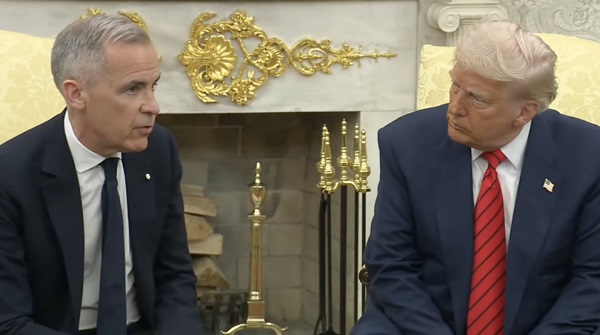
 Business2 days ago
Business2 days agoCanada Caves: Carney ditches digital services tax after criticism from Trump
-

 Alberta1 day ago
Alberta1 day agoAlberta Independence Seekers Take First Step: Citizen Initiative Application Approved, Notice of Initiative Petition Issued
-

 Health19 hours ago
Health19 hours agoRFK Jr. Unloads Disturbing Vaccine Secrets on Tucker—And Surprises Everyone on Trump
-

 Censorship Industrial Complex8 hours ago
Censorship Industrial Complex8 hours agoGlobal media alliance colluded with foreign nations to crush free speech in America: House report
-

 Crime2 days ago
Crime2 days agoSuspected ambush leaves two firefighters dead in Idaho



